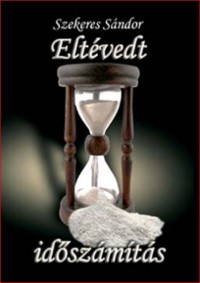
When someone comes across a new hypothesis, it is expected to present at least briefly the previous theories on his topic. It is also appropriate to state why we disagree with the other approaches, and we do these in this post.
We have seen that (according to unanimous church and historical statements) our chronology is based on Exiguus’ calculation in AD525, but Exiguus made a “mistake” of 7 years.
Many professional historians have recognised that our reckoning of time has a “much greater uncertainty” than Exiguus’ 7-year error. However, they don’t want to talk about it for fear of putting their reputations on the line. In particular, the existence or length of the Dark Middle Ages is in question. (See Explanations)
As mentioned above, three well-known theories about the misinterpretation of the AD era emerged in the minds of amateur historians. Initially, I wanted to refute these three theories for my own “amusement”. (There are also “wilder” ideas, like Fomenko’s “New Chronology” hypothesis, based on mathematics and history).
According to two theories, “a reverse theft occurred”. Years were not made to disappear, but intentionally fictitious phantom years were inserted into the “historical time gap” between really happened historical events.
- ILLIG

The most famous of these speculations is the already mentioned “conspiracy theory” of Heribert ILLIG: “The Invented Middle Ages”. (Original German title: “Das erfundene Mittelalter“). Illig claims that a Europe-wide “conspiratorial forgery” inserted 297 fictitious years, i.e., between AD614 and AD911, there were no historical events in our history. Earlier events happened 297 years later.
He states that the history of Charlemagne never happened, and it was invented. Illig bases his theory mainly on the fact that many documents from Charlemagne’s time were false.
Illig has written another book with co-author “Hungary in the Invented Middle Ages” (See above. As far as I know, not available in English)
Unfortunately, his books could not clarify the contradictions between the chronology of the old Hungarian chronicles and today’s scientific view of the Hunnic-Hungarian ancestry.
Moreover, the insertion of 297 years seems to be impossible because it is too long. This issue will be explained in detail later.
- HUNNIVÁRI

The theory of Zoltán Skoda (his mainly used pen name is Hunnivári) is similar, but according to him, 194-200 “fictitious years” were inserted, depending on the time. Hunnivári places the insertion between AD880 and AD1080. Furthermore, for example, the list of popes for the inserted years was falsified, according to Hunnivari.
Although Hunnivári uses mainly astronomic arguments, it isn’t easy to imagine in his theory that the length of the fictive time he envisions could vary over time. This would mean that the chronology was manipulated and corrected several times, which I think is unlikely. But it is also unlikely that such minor corrections and interventions, which could have been documented without loss of prestige, are not mentioned in history. Moreover, the 200 years of insertion assumed by Hunnvári falls in the time when AD time reckoning became gradually widely used in Europe, as we know, for example, from the works of the scientist István Hahn and from other sources, too.
- SZEKERES

In contrast to the two theories mentioned above, Sándor Szekeres claims that the misinterpretation of our time reckoning happened by chance. (His book was published only in Hungarian, and its title in my translation is: “Accidental miscalculation of time”). According to Szekeres, the Parthian UR time reckoning, which began 247 years before AD1, was by mistake applied to the birth of our Dominus Jesus.
The Parthian UR time reckoning was introduced by Arsaces I., the founder of Parthia, also called Parthian Empire. Arsaces I. was also called UR Arsaces, i.e., Latin Dominus Arsaces, because the meanings of Ur are Lord, Ruler, and God. (By the way, the interpretations of the word “Úr” (U with an accent, long pronounced u) are the same also in both old and today’s Hungarian). So, long before Anno Domini was introduced for Jesus’ years by Exiguus, the Latin AD abbreviation was used according to Szekeres for the years of Dominus Arsaces, too. (A further application of AD for the years of Emperor Diocletian will be shown later.)
As far as I see, an accidental miscalculation cannot remain undetected for centuries. The retrospective correction would have led to less loss of reputation than the retroactive detection of the earlier acceptance of the error.
- None of these three theories disputes the correct chronology of the entire Roman period. They agree that the “back-shifting” of a period created a “historical time gap” that had to be filled by fictitious historical events. By omitting the fictitious filling, it means that by reconstructing the original state, the Roman dates would get centuries (200; 247; 297 years) closer to our present day.
The already mentioned “Gregory’s dilemma” is an emphasised argument of the inventors and supporters of the “time falsehood”. I repeat the dilemma here:
“If our calendar were correct, Pope Gregory XIII could not have corrected the Julian calendar by deleting ten days when he introduced the Gregorian calendar in AD 1582. He would have had to omit 13 days. The vernal equinox (short VEQ; see Abbreviations) moves back one day every 128 years in the Julian calendar. The backwards shift would have been 13 days in 1626 years (45BC-AD1582), while the deleted ten calendar days correspond to only 1280 elapsed years.”
This is a solid astronomical argument to underline the possibility of the insertion of centuries. Calendar researchers resisted this argument by experimenting with contradictory explanations of the beginning period of the Julian Calendar. Their most accepted view is that the VEQ-day was placed on 25 March in 45BC. Furthermore, it is a widespread view today that the insertion of the leap years occurred at the beginning erroneously, as we show later.
A related note. For a long time, many calendar scholars assumed that Pope Gregory XIII had to omit 10 days instead of 13 when he introduced his calendar reform because the I. Council of Nicaea (AD325) had already omitted 3 days from the Julian calendar. The omission of 3 days by the First Council of Nicaea is now rejected by most scholars because there is no evidence. There are no sources or clues about omitted days or changes in leap years after the 1st Council of Nicaea.
However, the final solution to this dilemma has been missing until now.
These Issues will be elaborated on soon in detail.
Of course, my not only numerically different current hypothesis is my major refutation of the above three theories.
